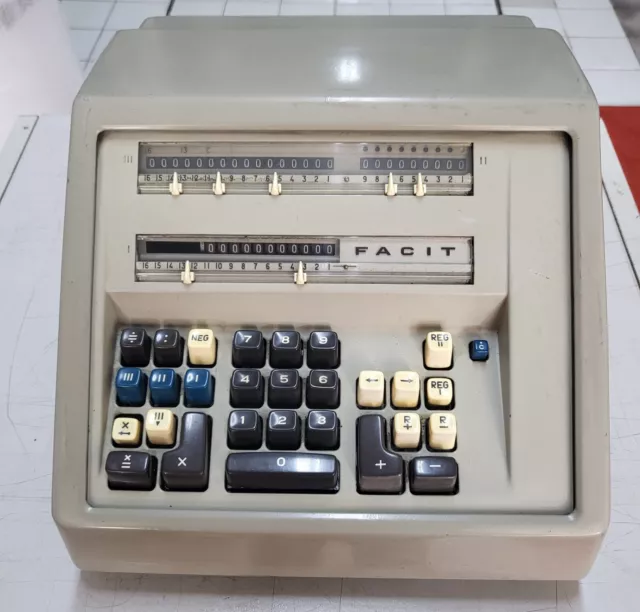FACIT CA2-16SX CALCOLATRICE del 1965 NO OLIVETTI OLD CALCULATOR MADE IN SWEDEN
The "Facit" company was established in Stockholm in 1918 to build a line of pin-wheel calculators based on the Odhner mechanism .
In 1924 Facit became part of Atvidaberg Industries, a long-established firm of office furniture and equipment suppliers. Facit production moved to Atvidaberg, and the model range developed rapidly. As the firm grew it absorbed the Halda typewriter company in 1938, Original-Odhner in 1942, and Addo in 1966. At its peak the company had over a thousand employees, with sales agents in a hundred countries, before collapsing in the early 1970s.
The early Facit calculators were similar to the Odhner, with rotary setting levers and a moving carriage which extended beyond the body of the machine. In the early 1930s engineer Karl Rudin made a radical design change which retained the pin-wheel principle but eliminated the external moving carriage. The pin-wheel mechanism was effectively turned upside-down, with the accumulator and counter registers being fixed in position at the top of the machine, and the rotor arranged to travel laterally within the confines of the body. At the same time, the rotary setting levers were replaced with the two-row "Dalton" keyboard mechanism. The operating levers and the cranking handle were the only external moving parts.
This "inverted" pin-wheel mechanism formed the basis of the Facit model range for the next 40 years. Beginning with the Model T in 9 x 8 x 13 format in 1932, the machine progressed through the Model TK (1936) and the NTK (1954) to the C1-13 of 1957, which continued with only minor changes into the early 1970s. The same mechanism formed the basis of the first motor-driven range, which progressed through several models into the fully-automatic CA1-13 of 1956. A 16-digit mechanism with back-transfer and a 10-key numeric keypad was introduced as the manual Model CM2-16 in 1959. The fully-automatic CA2-16 followed in 1962, with an updated Model 10-07 in 1967. The 13 and 16-digit mechanisms were both manufactured in parallel until the end of production in about 1973.
In 1966 Facit introduced the first of a range of electronic calculators manufactured by Sharp in Japan. The Facit machines had their own distinctive case designs, but the internals were generally similar or identical to the machines sold under Sharp's own brand. The electronic machines were sold in parallel with Facit's traditional mechanical calculators, but were initially much more expensive. The prices reached parity in about 1972, which effectively marked the end of mechanical calculator production.
Facit Badge La società "Facit" è stata fondata a Stoccolma nel 1918 per costruire una linea di calcolatori a cursori basati sul meccanismo Odhner.
Nel 1924 Facit entrò a far parte della Atvidaberg Industries, una società di lunga data di fornitori di mobili e attrezzature per ufficio. La produzione di Facit si trasferì ad Atvidaberg e la gamma di modelli si sviluppò rapidamente. Man mano che l'azienda cresceva, assorbì la Halda Typewriter nel 1938, la Original-Odhner nel 1942 e la Addo nel 1966. Al suo apice l'azienda aveva oltre un migliaio di dipendenti, con agenti di vendita in un centinaio di paesi, prima di crollare nei primi anni 1970.
Le prime calcolatrici Facit erano simili alle Odhner, con leve di regolazione rotanti e un carrello mobile che si estendeva oltre il corpo della macchina. Nei primi anni '30 l'ingegnere Karl Rudin apportò un radicale cambiamento progettuale che mantenne il principio della ruota a perno ma eliminò il carrello mobile esterno. Il meccanismo della ruota a perno è stato effettivamente capovolto, con l'accumulatore e i contatori fissati in posizione nella parte superiore della macchina e il rotore predisposto per viaggiare lateralmente entro i confini del corpo. Allo stesso tempo, le leve di regolazione rotanti sono state sostituite con il meccanismo di tastiera a due file "Dalton". Le leve di comando e la manovella erano le uniche parti mobili esterne.
Questo meccanismo con ruota a perno "rovesciata" ha costituito la base della gamma di modelli Facit per i prossimi 40 anni. A partire dal Model T nel formato 9 x 8 x 13 nel 1932, la macchina progredì attraverso il Model TK (1936) e il NTK (1954) fino al C1-13 del 1957, che continuò con solo piccole modifiche nei primi anni 1970. Lo stesso meccanismo ha costituito la base della prima gamma motorizzata, che ha progredito attraverso diversi modelli nel completamente automatico CA1-13 del 1956. Un meccanismo a 16 cifre con back-transfer e un tastierino numerico a 10 tasti fu introdotto come modello manuale CM2-16 nel 1959. Il CA2-16 completamente automatico seguì nel 1962, con un Modello 10-07 aggiornato nel 1967. I meccanismi a 13 e 16 cifre
| Produttore: | FACIT |
| Tipo: | CA2-16SX |
| Anno di costruzione: | 1965 |
| Tecnologia: | ruota dentata elettromeccanica divisa |
| Prezzo: | DM 2500,- |
Il CA2-16SX è un esempio delle ultime novità in fatto di calcolatrici meccaniche. È completamente incapsulato, quindi non c'è più alcun pericolo per l'utente umano da un carrello avanti e indietro o da alberi rotanti come il Madas. Naturalmente, questo lo rende anche relativamente silenzioso.
Il suo ingombro, ovvero lo spazio necessario sulla scrivania, è di soli 86 cm², il suo volume è di circa 15 litri. Per fare un confronto: l'ime-84 transistorizzato dello stesso periodo richiede 194 cm² e il suo volume è di 31 litri. Inoltre, l'ime-84 costava quasi il doppio. Il tastierino numerico ridotto di Facit è molto simile a quello di una calcolatrice elettronica e anche il funzionamento è relativamente semplice. In confronto, l'ANITA, che ha solo pochi anni in più, con la sua tastiera completa è ancora molto simile alla costruzione prebellica del MADAS.
Spese di spedizione indicative verranno ricalcolate secondo le tue indicazioniCome da foto
NON TESTATA - MANCA IL MOTORE
FORMULA D'ACQUISTO AS IS - VISTO E PIACIUTO
AS IS - CALCULATOR WITHOUT MOTOR
ONLY FOR COLLECTION
DISPONIBILI MIGLIAIA DI RICAMBI PER MACCHINE DA UFFICIO DAL 1850 FINO AI NOSTRI GIORNI, OLIVETTI E NON SIA MACCHINE PER SCRIVERE CHE CALCOLATRICI ED ALTRE, NON ESITARE A CONTATTARMI POTRESTI TROVARE IL RICAMBIO PER RESTAURARE IL TUO ESEMPLARE
ATTENTION: for international shipments (USA-Australia-China etc) the import costs due via Ebay will be charged
I TEMPI DI IMBALLAGGIO SONO INDICATIVI, PER L'ITALIA LA SPEDIZIONE VIENE EFFETTUATA ENTRO 3/4 GIORNI
DISPONIBILE SIA PER LA VENDITA CHE PER IL NOLEGGIO, CONTATTACI
L'OGGETTO E' DISPONIBILE ANCHE PER IL NOLEGGIO CONTATTACI
- Condition: USATA NON TESTATA, MANCA IL MOTORE - COME DA FOTO-DA COLLEZIONE - CALCULATOR WITHOUT MOTOR
PicClick Insights - FACIT CA2-16SX CALCOLATRICE del 1965 NO OLIVETTI OLD CALCULATOR MADE IN SWEDEN PicClick Exclusivo
- Popularidad - 10 seguidores, 0.0 nuevos seguidores por día, 394 days for sale on eBay. Gran cantidad en seguimiento. 0 vendidos, 1 disponible.
- Mejor Precio -
- Vendedor - 693+ artículos vendidos. 0% votos negativos. Gran vendedor con la regeneración positiva muy buena y sobre 50 calificaciones.
La Gente También Amó PicClick Exclusivo
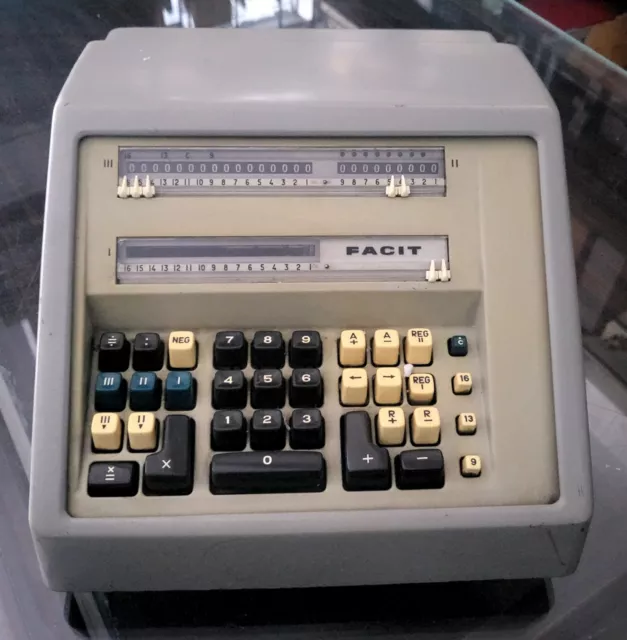
FACIT CA2-16 CALCOLATRICE del 1962 NO OLIVETTI OLD CALCULATOR MADE IN SWEDEN
EUR 160,00 ¡Cómpralo ya! 3d 0h
FACIT CA2-16 CALCOLATRICE del 1962 NO OLIVETTI OLD CALCULATOR MADE IN SWEDEN
EUR 490,00 ¡Cómpralo ya! 9d 21h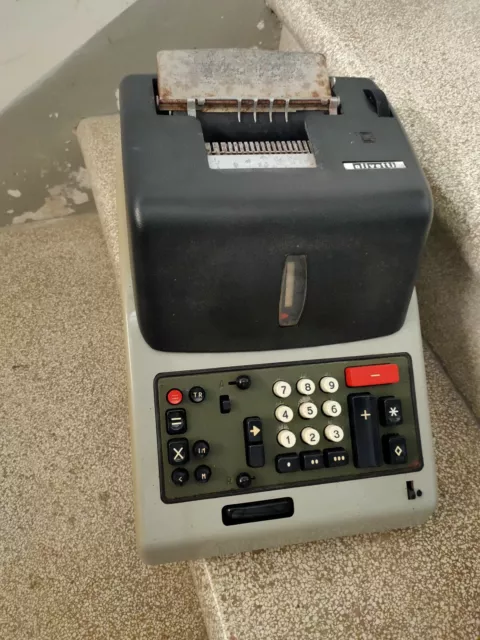
Olivetti Multisumma 24 Vintage Antica Calcolatrice - Old Calculator Olivetti
EUR 90,00 ¡Cómpralo ya! 17d 2h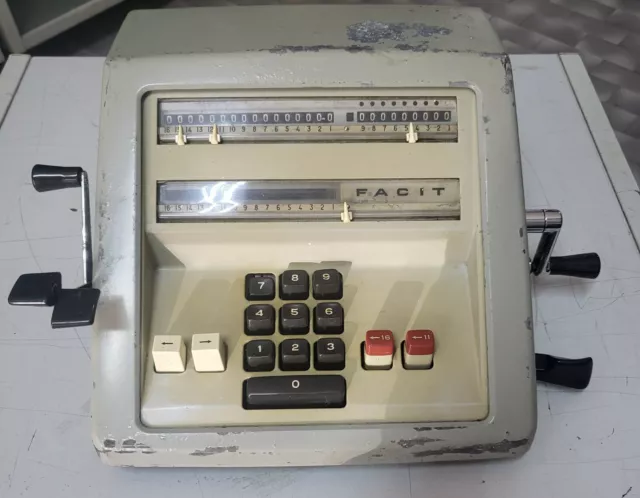
FACIT CM2-16 CALCOLATRICE del 1960 NO OLIVETTI OLD CALCULATOR MADE IN SWEDEN
EUR 190,00 ¡Cómpralo ya! 2d 1h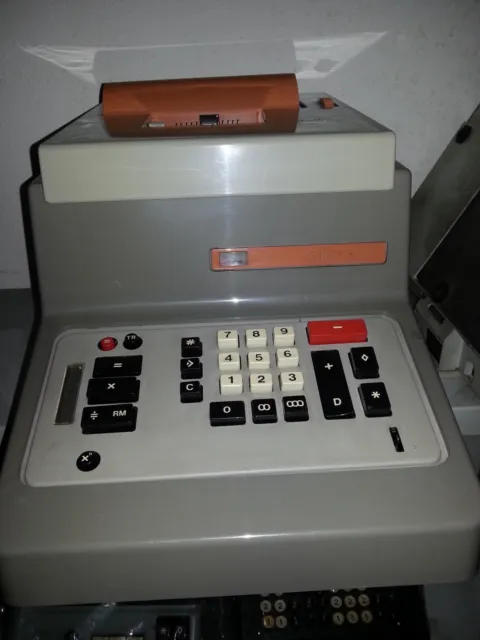
Olivetti Divisumma 26 Old Calculator Vintage Antica Calcolatrice
EUR 170,00 ¡Cómpralo ya! 20d 0h
